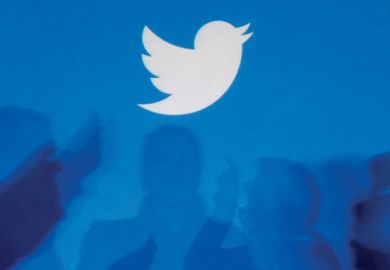Universities are failing to make best use of Twitter and may promote “inaccurate” depictions of themselves via the social network, a major study says.
An analysis of the Twitter accounts of 2,411 US higher education providers found that they were largely used to broadcast information or to highlight positive aspects of their institution.
Examples of universities utilising Twitter to engage in dialogue or debate and to reach out to the wider community were much less widespread.
Co-authors Royce Kimmons and Scott Woodward, of Brigham Young University, and George Veletsianos, of Royal Roads University, argue that institutions should use the social network not just as a marketing tool but also as a way to break down barriers with the wider community.
Detailing their analysis of 5.7 million tweets in the journal Innovative Higher Education, the trio write that 78.8 per cent of posts served to broadcast information, such as telling users that a new issue of a university magazine is out.
Only 12.2 per cent of tweets called upon readers to respond in a particular way, for example, to read, retweet, follow or “join us”.
Even fewer – 10.1 per cent – directly engaged with another tweet or user.
Computer analysis of the full dataset and human examination of a smaller sample found that about four in 10 expressed positive sentiments, such as: “Welcome to campus new students! We’re enjoying the day with these soon to be [team mascots]!” Just over half were neutral, and very few were negative, even when posts such as “More snow coming? Really?” were included in that category.
Further scrutiny of a sample of 1,027 tweets that contained images found that 85.4 per cent showed a positive image of the institution, with around half of these (47.8 per cent) showing experiences such as student activities, a quarter (24.9 per cent) depicting attractive campus scenes, and 12.8 per cent showing successes, such as graduation ceremonies.
Dr Kimmons, assistant professor in instructional psychology and technology at Brigham Young, said university Twitter accounts were “used almost entirely for branding and events management”.
“This result might be viewed as a given for many people, but to us this suggests that social media are not living up to their potential as tools that can help to break down traditional barriers between institutions, communities and individuals,” he said.
“Rather than removing barriers, it seems that social media may actually be used to further polish the ivory tower image of the university by conveying inaccurate or incomplete messages about who attends and what goes on there.”
Dr Veletsianos, Canada research chair in innovative learning and technology at Royal Roads, said that universities should use Twitter to “to interact, and to enable people to learn from one another”.
“More effective use of social media might involve using hashtags to connect alumni and students, sharing practical knowledge with communities that might benefit from the research conducted at the university, and providing educational opportunities to the thousands of followers that subscribe to institutional Twitter feeds,” he said.
Register to continue
Why register?
- Registration is free and only takes a moment
- Once registered, you can read 3 articles a month
- Sign up for our newsletter
Subscribe
Or subscribe for unlimited access to:
- Unlimited access to news, views, insights & reviews
- Digital editions
- Digital access to THE’s university and college rankings analysis
Already registered or a current subscriber?







